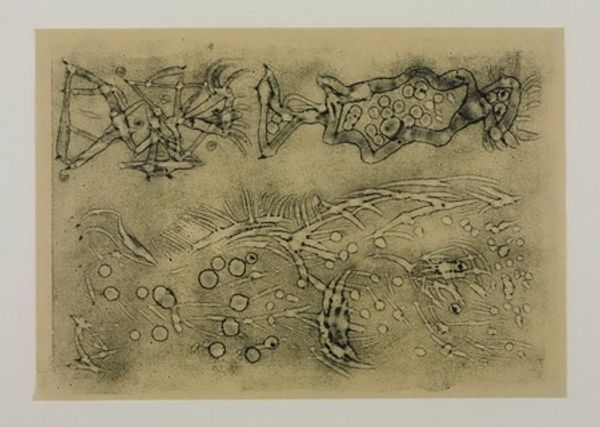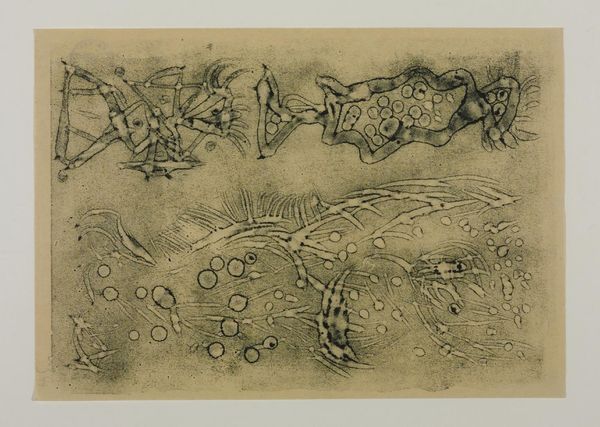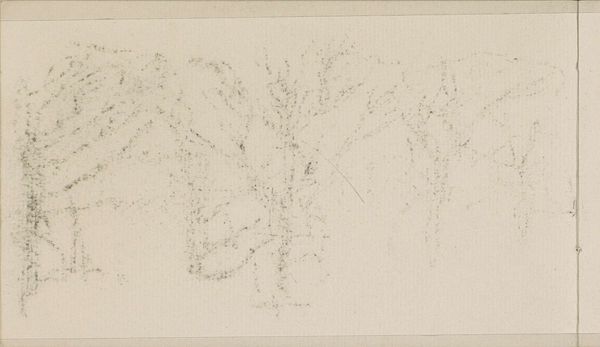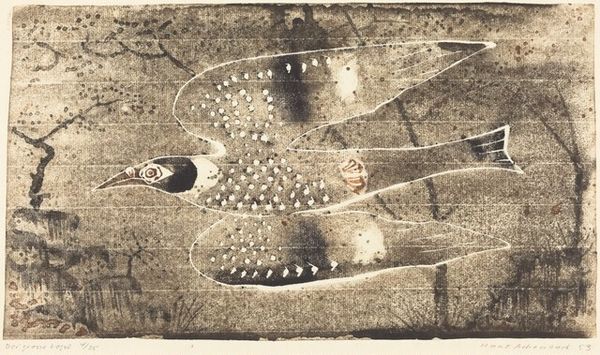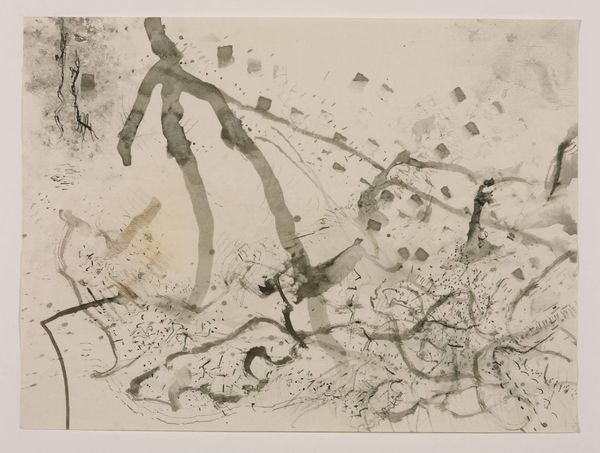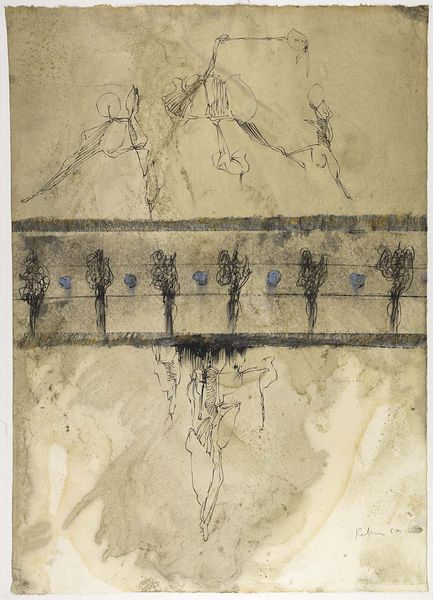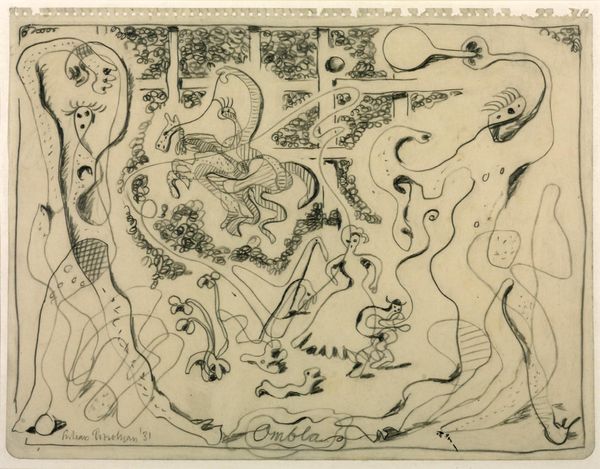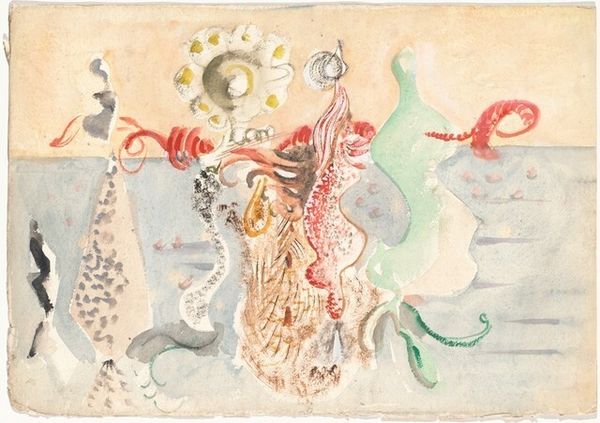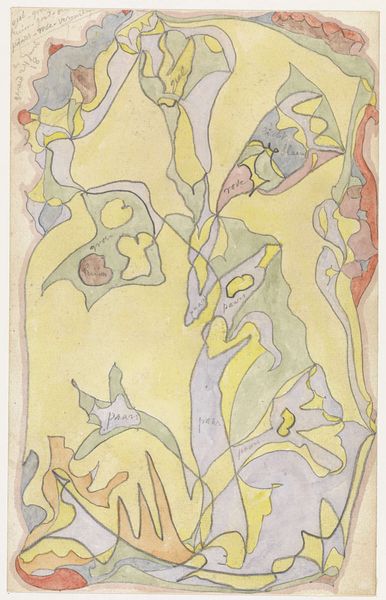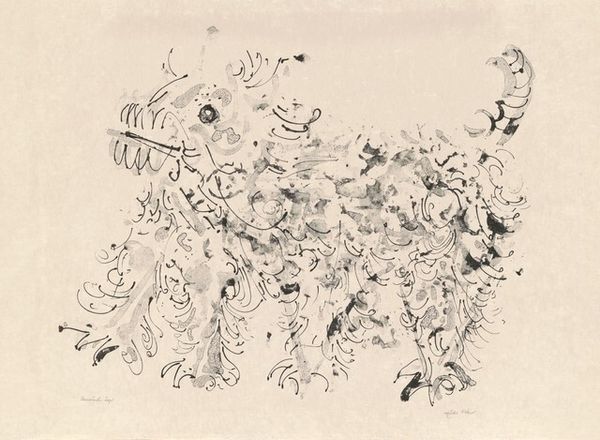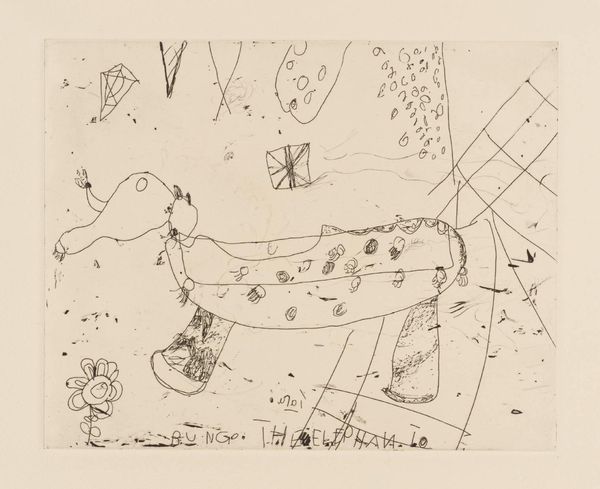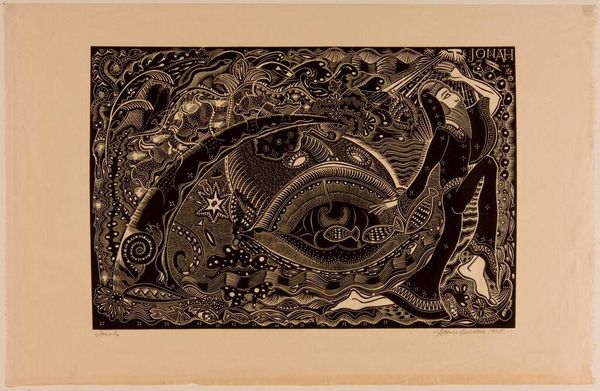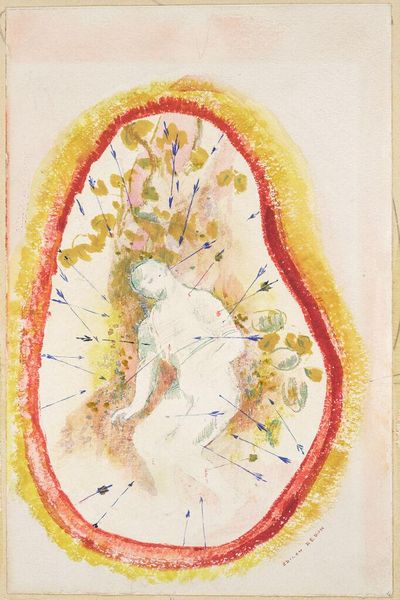
Dimensions: support: 125 x 205 mm
Copyright: © Tate | CC-BY-NC-ND 4.0 DEED, Photo: Tate
Editor: Cecil Collins' "Poem," created in 1933, is a whirlwind of ink and watercolor. The circles and lines feel almost like a strange machine. What do you make of this image, and its place in the art world? Curator: It's fascinating how Collins intertwines the mechanical and the organic. This piece, made during a period of immense social and political upheaval, seems to question the role of technology within humanity's spiritual life. Does this resonate with you? Editor: Yes, the contrast between the geometric shapes and the almost floral background definitely suggests a tension. It makes me wonder about his views on progress and society at the time. Curator: Exactly. The politics of imagery often reveal anxieties and aspirations. Considering the rise of industrialization and its impact on human experience, this "Poem" could be seen as a meditation on the human condition. It's powerful to see how art reflects societal changes. Editor: That’s a perspective I hadn’t fully considered. Thanks, that really illuminated the painting for me. Curator: And for me as well. Thinking about art in terms of the world around it is always a rewarding challenge.
Comments
Join the conversation
Join millions of artists and users on Artera today and experience the ultimate creative platform.
tate 7 months ago
⋮
Collins drew Poem in the same year that he made two similar paintings, Composition 1933 (Dartington Hall Trust, reproduced Anderson, pl.13) and Music of the Worlds (reproduced Anderson, pl.95). William Anderson has explained these seemingly abstract compositions in terms of recent science. Advances in cell biology and in astrophysics, the latter transformed by Hubble’s discovery of the expansion of the universe in 1929, created a new vocabulary for scientists and artists alike. Anderson commented that, ‘Where many scientists at that time would have seen the awe-inspiring but mindless forces of the universe at work, he saw these galactic worlds arising out of music and alive with centres of awakening consciousness that burst into roundels of black rays signalling to one another’ (Anderson, p.36).
